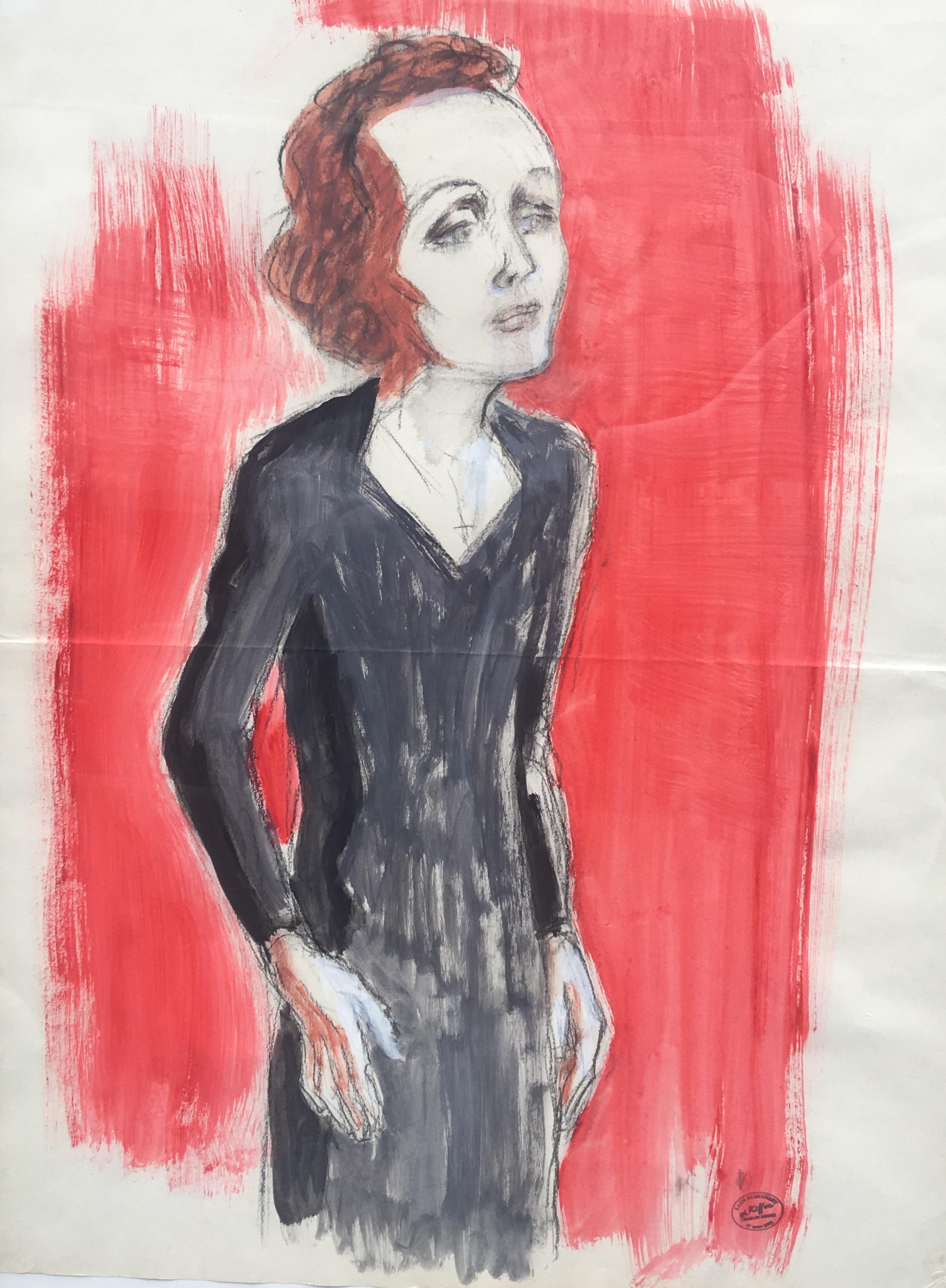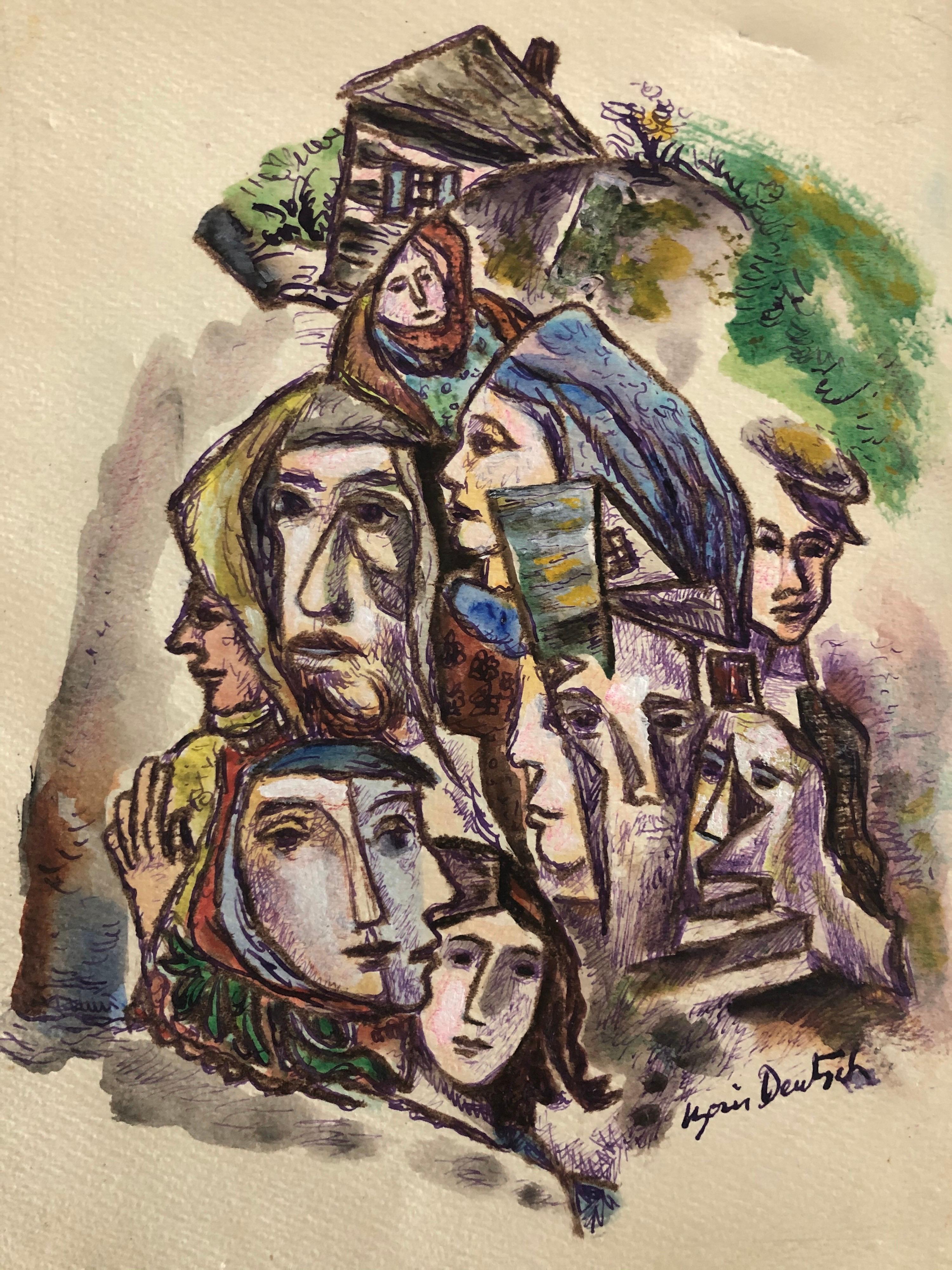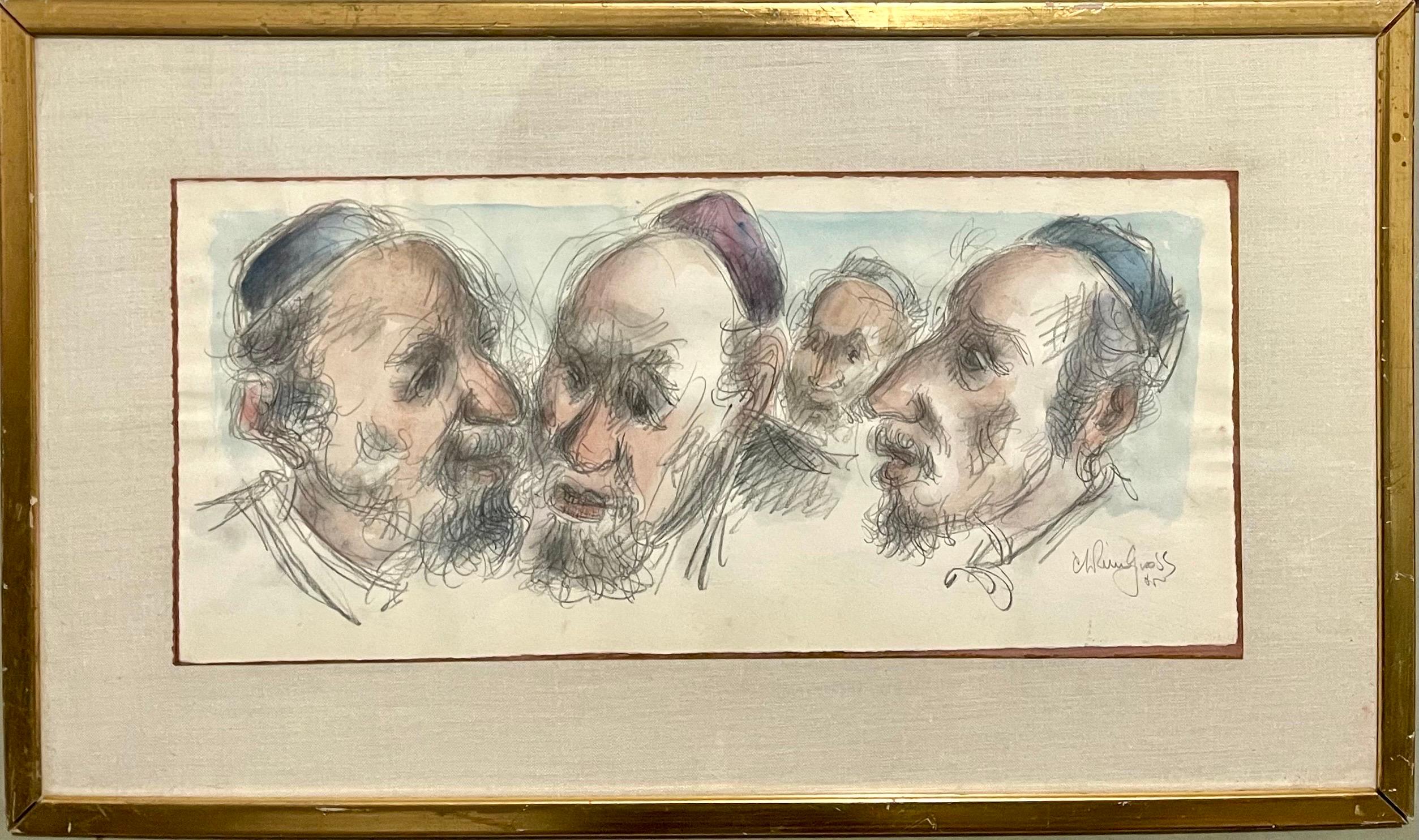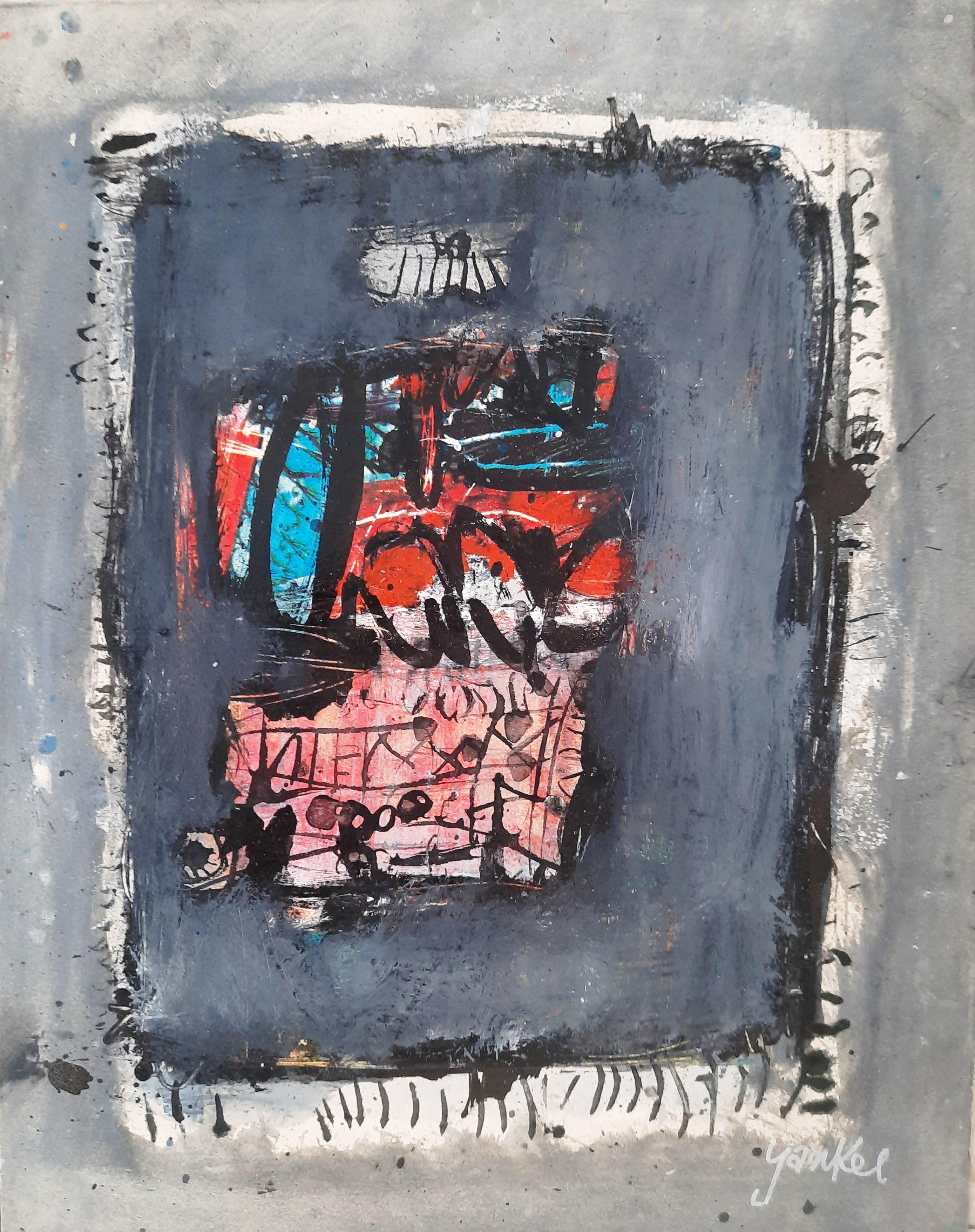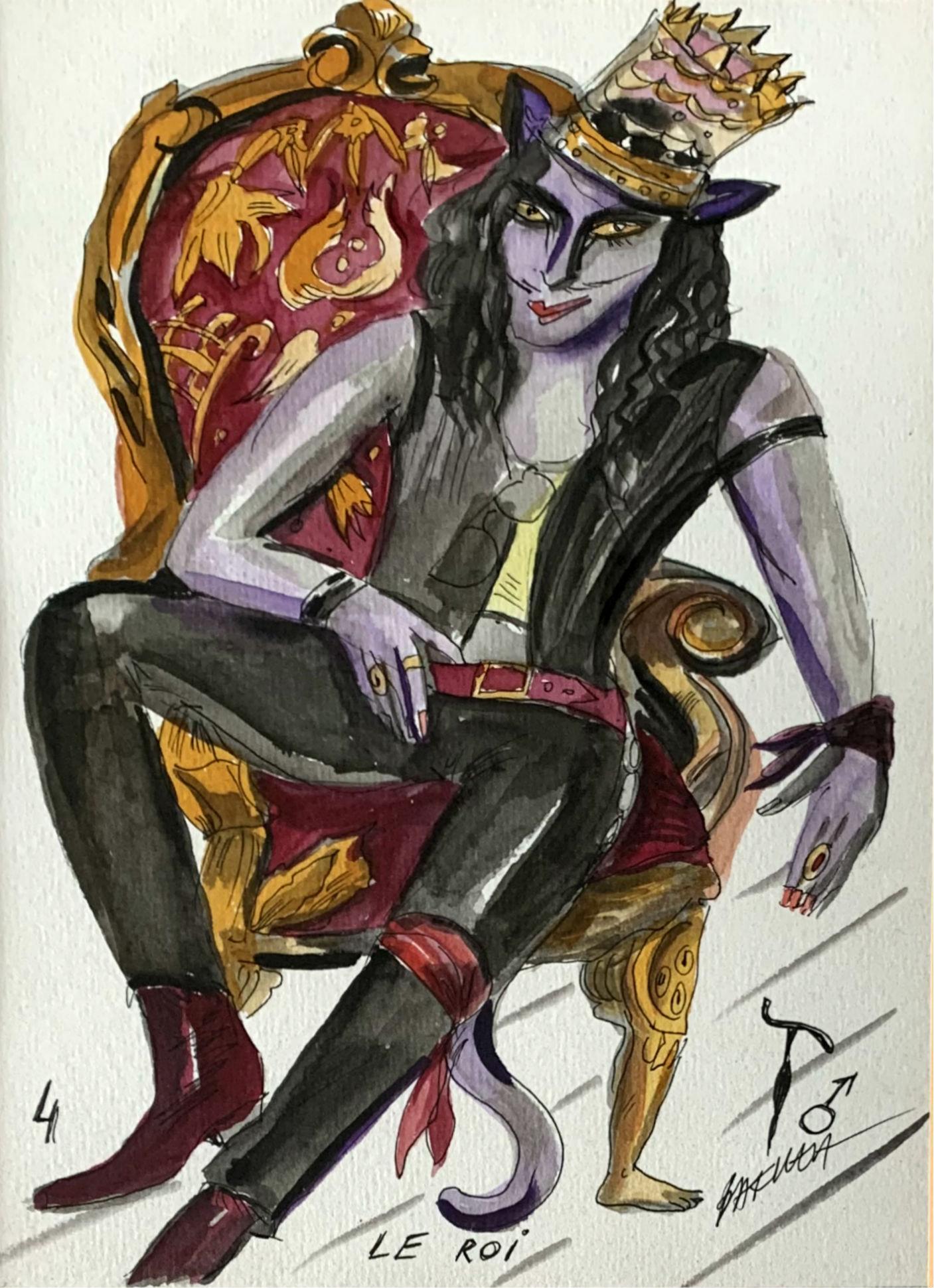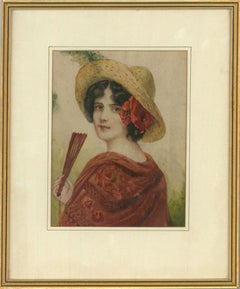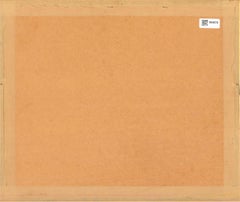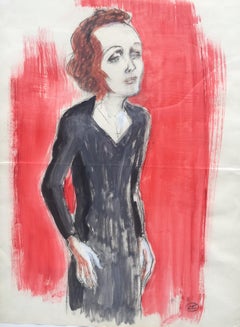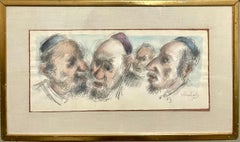
T. W. T.. - Signed & Framed 1857 Watercolour, Pyrenean Mountain Boy
View Similar Items
Want more images or videos?
Request additional images or videos from the seller
1 of 8
UnknownT. W. T.. - Signed & Framed 1857 Watercolour, Pyrenean Mountain Boy1857
1857
About the Item
- Creation Year:1857
- Dimensions:Height: 21.23 in (53.9 cm)Width: 16.89 in (42.9 cm)
- Medium:
- Period:
- Condition:The condition is typical for a picture of this age including some discolouration. Some mountburn is present. There is light foxing.
- Gallery Location:Corsham, GB
- Reference Number:Seller: qa6431stDibs: LU88137936962
About the Seller
4.9
Platinum Seller
These expertly vetted sellers are 1stDibs' most experienced sellers and are rated highest by our customers.
Established in 2010
1stDibs seller since 2018
857 sales on 1stDibs
Typical response time: 5 hours
More From This SellerView All
- Framed Late 19th Century Watercolour - Lady with the FanLocated in Corsham, GBA fine late 19th century portrait of a young lady. The elegant sitter is wearing a wide brim straw hat with picked red blooms. In her right hand she has hold of a delicate red fan, w...Category
Late 19th Century Portrait Drawings and Watercolors
MaterialsWatercolor
- J.H.M - Mid 19th Century Watercolour, Young Traveler WomanLocated in Corsham, GBA fine Victorian watercolour showing a young woman in a red travelling cloak resting on her journey. The painting has a contemplative mood, with the woman s...Category
Mid-19th Century Portrait Drawings and Watercolors
MaterialsWatercolor
- Signed Contemporary Gouache - The ManLocated in Corsham, GBA charming gouache and watercolours study of a man. Illegibly signed to the lower left and well presented in a white mount and hardwood frame. On wove.Category
21st Century and Contemporary Portrait Drawings and Watercolors
MaterialsGouache
- Rudland - Early 20th Century Watercolour, Bespectacled GentlemanLocated in Corsham, GBA striking early 20th Century portrait of a distinguished looking man with a fine mustache and wire spectacles. He has neatly swept back hair and wears a suit and shirt. The artist h...Category
Early 20th Century Portrait Drawings and Watercolors
MaterialsWatercolor
- Manner of Jean-Frédéric Schall (1752-1825)- Mid 19thC Watercolour, Flower SellerLocated in Corsham, GBA beautiful mid 19th Century watercolour,showing a pretty young flower seller with dark hair and a corseted dress with linen undershirt. She is carrying a basket of delicate pink ros...Category
Mid-19th Century Portrait Drawings and Watercolors
MaterialsWatercolor
- Late 19th Century Watercolour - Pause For ThoughtLocated in Corsham, GBAn exquisite late 19th Century watercolours portrait of a beautiful young woman in a Middle Eastern landscape, sitting with elegant poise, on ...Category
Late 19th Century Portrait Drawings and Watercolors
MaterialsWatercolor
You May Also Like
- Edith Piaf On Stage Watercolor signed Charles Kiffer circa 1935By Charles KifferLocated in Paris, FREdith Piaf on stage watercolor and pencil on paper, mongrammed K for Charles Kiffer (1902-1992), Workshop stamp. Charles Kiffer is well known for his figures, paintings, prints, pos...Category
1930s Modern Portrait Drawings and Watercolors
MaterialsWatercolor
- Abstract Houses and Faces Ink Drawing and Watercolor Painting Shtetl JudaicaBy Boris DeutschLocated in Surfside, FLImage size is 11.60" by 9" Boris Deutsch (Lithuanian-American Modernist) was born in Krasnogorsk Lithuania june 4 1892 died in Los Angeles 1978. Entered the polytechnic school in rig...Category
20th Century Modern Portrait Drawings and Watercolors
MaterialsInk, Watercolor
- Chaim Gross Mid Century Mod Judaica Jewish Watercolor Painting Rabbis WPA ArtistBy Chaim GrossLocated in Surfside, FLChaim Gross (American, 1904-1991) Watercolor painting Rabbinical Talmudic Discussion Hand signed 17 x 29 framed, paper 10 x 22 Chaim Gross (March 17, 1904 – May 5, 1991) was an American modernist sculptor and educator. Gross was born to a Jewish family in Austrian Galicia, in the village of Wolowa (now known as Mezhgorye, Ukraine), in the Carpathian Mountains. In 1911, his family moved to Kolomyia (which was annexed into the Ukrainian USSR in 1939 and became part of newly independent Ukraine in 1991). When World War I ended, Gross and brother Avrom-Leib went to Budapest to join their older siblings Sarah and Pinkas. Gross applied to and was accepted by the art academy in Budapest and studied under the painter Béla Uitz, though within a year a new regime under Miklos Horthy took over and attempted to expel all Jews and foreigners from the country. After being deported from Hungary, Gross began art studies at the Kunstgewerbeschule in Vienna, Austria shortly before immigrating to the United States in 1921. Gross's studies continued in the United States at the Beaux-Arts Institute of Design, where he studied with Elie Nadelman and others, and at the Art Students League of New York, with Robert Laurent. He also attended the Educational Alliance Art School, studying under Abbo Ostrowsky, at the same time as Moses Soyer and Peter Blume. In 1926 Gross began teaching at The Educational Alliance, and continued teaching there for the next 50 years. Louise Nevelson was among his students at the Alliance (in 1934), during the time she was transitioning from painting to sculpture. In the late 1920s and early 1930s he exhibited at the Salons of America exhibitions at the Anderson Galleries and, beginning in 1928, at the Whitney Studio Club. In 1929, Gross experimented with printmaking, and created an important group of 15 linocuts and lithographs of landscapes, New York City streets and parks, women in interiors, the circus, and vaudeville. The entire suite is now in the collection of the Philadelphia Museum of Art. Gross returned to the medium of printmaking in the 1960s, and produced approximately 200 works in the medium over the next two decades. For more than sixty years Chaim Gross's art has expressed optimistic, affirming themes, Judaica, balancing acrobats, cyclists, trapeze artists and mothers and children convey joyfulness, modernism, exuberance, love, and intimacy. This aspect of his work remained consistent with his Jewish Hasidic heritage, which teaches that only in his childlike happiness is man nearest to God. In March 1932 Gross had his first solo exhibition at Gallery 144 in New York City. For a short time they represented Gross, as well as his friends Milton Avery, Moses Soyer, Ahron Ben-Shmuel and others. Gross was primarily a practitioner of the direct carving method, with the majority of his work being carved from wood. Other direct carvers in early 20th-century American art include William Zorach, Jose de Creeft, and Robert Laurent. Works by Chaim Gross can be found in major museums and private collections throughout the United States, with substantial holdings (27 sculptures) at the Hirshhorn Museum and Sculpture Garden. A key work from this era, now at the Smithsonian American Art Museum, is the 1932 birds-eye maple Acrobatic Performers, which is also only one and one quarter inch thick. In 1933 Gross joined the government's PWAP (Public Works of Art Project), which transitioned into the WPA (Works Progress Administration), which Gross worked for later in the 1930s. Under these programs Gross taught and demonstrated art, made sculptures that were placed in schools and public colleges, made work for Federal buildings including the Federal Trade Commission Building, and for the France Overseas and Finnish Buildings at the 1939 New York World's Fair. Gross was also recognized during these years with a silver medal at the Exposition universelle de 1937 in Paris, and in 1942, with a purchase prize at the Metropolitan Museum of Art's "Artists for Victory" exhibition for his wood sculpture of famed circus performer Lillian Leitzel. In 1949 Gross sketched Chaim Weizmann, Israeli President, at several functions in New York City where Weizmann was speaking, Gross completed the bust in bronze later that year. Gross returned to Israel for three months in 1951 (the second of many trips there in the postwar years) to paint a series of 40 watercolors of life in various cities. This series was exhibited at the Jewish Museum (Manhattan) in 1953. He also did some important Hebrew medals. In the 1950s Gross began to make more bronze sculptures alongside his wood and stone pieces, and in 1957 and 1959 he traveled to Rome to work with famed bronze foundries including the Nicci foundry. At the end of the decade Gross was working primarily in bronze which allowed him to create open forms, large-scale works and of course, multiple casts. Gross's large-scale bronze The Family, donated to New York City in 1991 in honor of Mayor Ed Koch, and installed at the Bleecker Street Park at 11th street, is now a fixture of Greenwich Village. In 1959, a survey of Gross's sculpture in wood, stone, and bronze was featured in the exhibit Four American Expressionists curated by Lloyd Goodrich at the Whitney Museum of American Art, with work by Abraham Rattner, Doris Caesar, and Karl Knaths. In 1976, a selection from Gross's important collection of historic African sculpture, formed since the late 1930s, was exhibited at the Worcester Art Museum in the show The Sculptor's Eye: The African Art Collection of Mr. and Mrs. Chaim Gross. Gross was elected into the National Academy of Design as an Associate member, and became a full Academician in 1981. In 1984, he was inducted into the American Academy of Arts and Letters, with Jacob Lawrence and Lukas Foss. In the fall of 1991, Allen Ginsberg gave an important tribute to Gross at the American Academy of Arts and Letters, which is published in their Proceedings. In 1994, Forum Gallery, which now represents the Chaim Gross estate, held a memorial exhibition featuring a sixty-year survey of Gross's work.In March 1932 Gross had his first solo exhibition at Gallery 144 in New York City. For a short time they represented Gross, as well as his friends Milton Avery, Moses Soyer, Ahron Ben-Shmuel and others. Gross was primarily a practitioner of the direct carving method, with the majority of his work being carved from wood. Other direct carvers in early 20th-century American art include William Zorach, Jose de Creeft, and Robert Laurent. Works by Chaim Gross can be found in major museums and private collections throughout the United States, with substantial holdings (27 sculptures) at the Hirshhorn Museum and Sculpture Garden. A key work from this era, now at the Smithsonian American Art Museum, is the 1932 birds-eye maple Acrobatic Performers, which is also only one and one quarter inch thick. In 1933 Gross joined the government's PWAP (Public Works of Art Project), which transitioned into the WPA (Works Progress Administration), which Gross worked for later in the 1930s. Under these programs Gross taught and demonstrated art, made sculptures that were placed in schools and public colleges, made work for Federal buildings including the Federal Trade Commission Building, and for the France Overseas and Finnish Buildings at the 1939 New York World's Fair. Gross was also recognized during these years with a silver medal at the Exposition universelle de 1937 in Paris, and in 1942, with a purchase prize at the Metropolitan Museum of Art's "Artists for Victory" exhibition for his wood sculpture of famed circus performer Lillian Leitzel. In 1949 Gross sketched Chaim Weizmann, President of Israel, at several functions in New York City where Weizmann was speaking, Gross completed the bust in bronze later that year. Gross returned to Israel for three months in 1951 (the second of many trips there in the postwar years) to paint a series of 40 watercolors of life in various cities. This series was exhibited at the Jewish Museum (Manhattan) in 1953. In the 1950s Gross began to make more bronze sculptures alongside his wood and stone pieces, and in 1957 and 1959 he traveled to Rome to work with famed bronze foundries including the Nicci foundry. At the end of the decade Gross was working primarily in bronze which allowed him to create open forms, large-scale works and of course, multiple casts. Gross's large-scale bronze The Family, donated to New York City in 1991 in honor of Mayor Ed Koch, and installed at the Bleecker Street Park at 11th street, is now a fixture of Greenwich Village. In 1959, a survey of Gross's sculpture in wood, stone, and bronze was featured in the exhibit Four American Expressionists curated by Lloyd Goodrich at the Whitney Museum of American Art, with work by Abraham Rattner, Doris Caesar, and Karl Knaths. In 1976, a selection from Gross's important collection of historic African sculpture, formed since the late 1930s, was exhibited at the Worcester Art Museum in the show The Sculptor's Eye: The African Art Collection of Mr. and Mrs. Chaim Gross. Gross was elected into the National Academy of Design as an Associate member, and became a full Academician in 1981. In 1984, he was inducted into the American Academy of Arts and Letters, with Jacob Lawrence and Lukas Foss. In the fall of 1991, Allen Ginsberg gave an important tribute to Gross at the American Academy of Arts and Letters, which is published in their Proceedings. In 1994, Forum Gallery, which now represents the Chaim Gross estate, held a memorial exhibition featuring a sixty-year survey of Gross's work. Gross was a professor of printmaking and sculpture at both the Educational Alliance and the New School for Social Research in New York City, as well as at the Brooklyn Museum Art School, the MoMA art school, the Art Student's League and the New Art School (which Gross ran briefly with Alexander Dobkin...Category
Mid-20th Century American Modern Figurative Drawings and Watercolors
MaterialsPaper, Watercolor
- Manette Yankel Contmeporary drawing gouache character figurative art greyBy Jacques YankelLocated in Paris, FRGouache on paper Unique work Hand-signed lower right by the artistCategory
1990s Contemporary Figurative Drawings and Watercolors
MaterialsPaper, Gouache
- Lady of spades - Watercolor painting, Figurative, ColourfulBy Hanna BakułaLocated in Warsaw, PLHANNA BAKUŁA (born in 1950) Polish painter, stage designer and writer. Bakuła graduated with honors from the Academy of Fine Arts in Warsaw, where she studied under such polish maste...Category
20th Century Other Art Style Figurative Drawings and Watercolors
MaterialsPaper, Watercolor
- Cancan - Watercolor painting, Figurative, Colourful, Dance, SatiricalBy Hanna BakułaLocated in Warsaw, PLHANNA BAKUŁA (born in 1950) Polish painter, stage designer and writer. Bakuła graduated with honors from the Academy of Fine Arts in Warsaw, where she studied under such polish masters as J. Tarasin, E. Eibisch, A. Kobzdej. In 1981 she moved to New York and settled down on Manhattan. She painted, designed scenography and costumes for the avant-garde theatre "The Kitchen". These designs were praised by "The New York Times" as the best of the Off Broadway projects and won the first prize. She received a scholarship from the Guggenheim Foundation. In 1989 she came back to Poland. Since 1996 years Bakuła has organized Franz Schubert...Category
20th Century Other Art Style Figurative Drawings and Watercolors
MaterialsPaper, Watercolor
